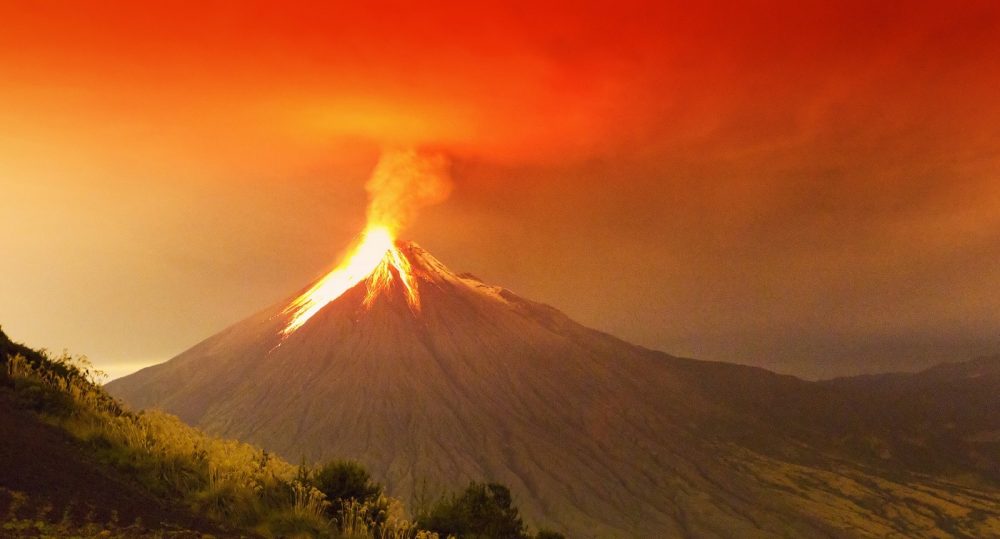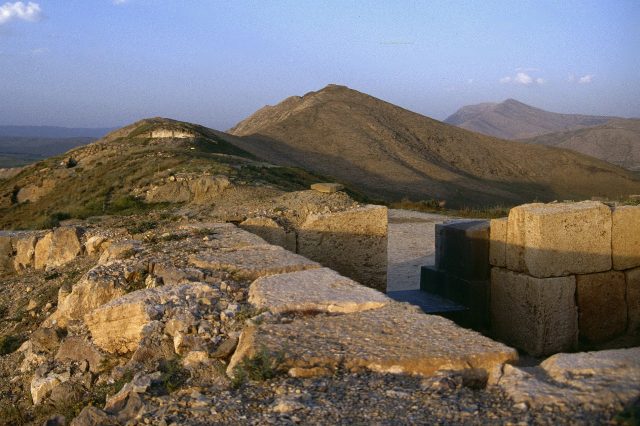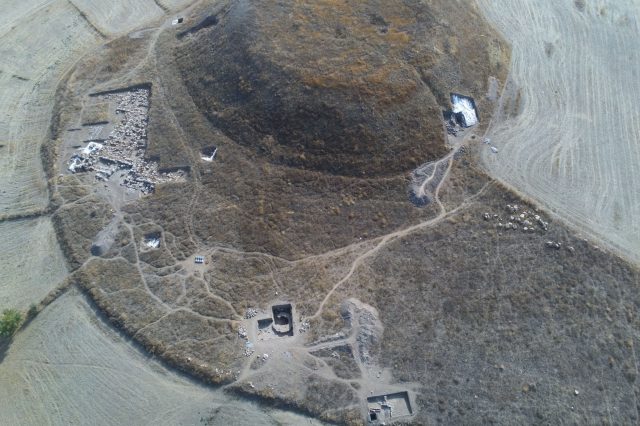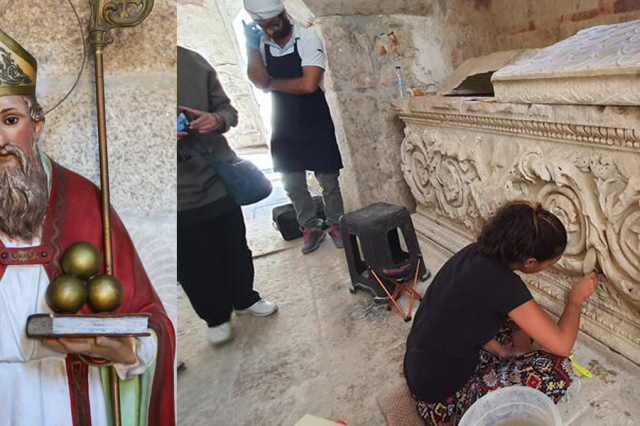Researchers say that this is the oldest site where humans eye-witnessed a volcanic eruption and artistically recorded it.
A volcanic eruption in present-day Turkey that had prehistoric humans as witnesses occurred 245,000 years later than initially thought.
Using two new, independent dating methods, scientists found that the event occurred as early as 4,700 years ago, during the Bronze Age, a recent study has found.
A new approach
The research published in Quaternary Science Reviews aimed to determine the age of the prehistoric footprints discovered in a layer of ash, produced by the eruption of the Çakallar volcano. The explosion took place in the city of Kula in western Turkey thousands of years ago.
But next to the prints, experts found a rock art that recorded the even.
The painting, which illustrates the eruption of the volcano, highlights how humans, thousands of years ago, were able to represent natural phenomena in their way.
The lead author of the study Martin Danišík from the John de Laeter Centre based at Curtin University said previous studies suggested that the tracks belonged to Homo neanderthalensis of the Pleistocene era. But experts may have been wrong.
New findings point to the fact that the footprints may be much more recent than previously thought.
Rewriting the history of the site
“The footprints, widely known as ‘Kula footprints,’ were discovered in the 1960s when construction workers, who were moving volcanic rocks away from one of the volcanoes in the area, found them well preserved in fine-grained volcanic ash. “Danišík revealed.
Danišík explained that his team was able to determine the age of the volcanic ash that preserved the footprints by using two independent dating methods.
Using cosmogenic and combined U-Pb and (U-Th)/He zircon geochronology, researchers found the first internally consistent eruption ages controlled by detailed volcanostratigraphic mapping.
Experts revealed that the two independent dating methods undoubtedly show that the volcanic eruption was witnessed by Homo sapiens during the prehistoric Bronze Age, 4,700 years ago and 245,000 years later than initially thought.
The new research also suggests that after the initial eruption, humans of the region slowly approached the volcano, leaving distinctive traces in the layer of wet ash on the surface.
As the volcanic activity continued, it caused dark volcanic rocks to bury the ashes and, therefore, preserve the tracks until they were uncovered in the 1960s.
As noted by the researcher, the people inhabiting present-day Turkey some 4,700 years ago most likely witnessed the final stages of the volcanic eruption from a safe distance.
The experts add that it is very likely that humans were also responsible for the rock engraving discovered near the site.
Danišík and his colleagues argue that the rock carvings have a fascinating connection with the footprints and demonstrate how humans were able to represent a natural phenomenon realistically, some 4,7000 years ago, despite having limited materials and tools.





